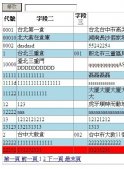在目前的软件项目中,都会较多的使用到对文档的操作,用于记录和统计相关业务信息。由于系统自身提供了对文档的相关操作,所以在一定程度上极大的简化了软件使用者的工作量。
在.NET项目中如果用户提出了相关文档操作的需求,开发者较多的会使用到微软自行提供的插件,在一定程度上简化了开发人员的工作量,但是同时也给用户带来了一些困扰,例如需要安装庞大的office,在用户体验性就会降低很多,并且在国内,很多人都还是使用wps,这就导致一部分只安装了wps的使用者很是为难,在对Excel的操作方面,有一个NPOI组件。那么可能会有人问有没有什么办法让这些困扰得到解决,答案是肯定的,那就是今天需要介绍的“DocX”组件,接下来我们就来了解一下这个组件的功能和用法。
一.DocX组件概述:
DocX是一个.NET库,允许开发人员以简单直观的方式处理Word 2007/2010/2013文件。 DocX是快速,轻量级,最好的是它不需要安装Microsoft Word或Office。DocX组件不仅可以完成对文档的一般要求,例如创建文档,创建表格和文本,并且还可以创建图形报表。DocX使创建和操作文档成为一个简单的任务。
它不使用COM库,也不需要安装Microsoft Office。在使用DocX组件时,你需要安装为了使用DocX是.NET框架4.0和Visual Studio 2010或更高版本。
DocX的主要特点:
(1).在文档中插入,删除或替换文本。所有标准文本格式都可用。 字体{系列,大小,颜色},粗体,斜体,下划线,删除线,脚本{子,超级},突出显示。
(2).段落属性显示。方向LeftToRight或RightToLeft;缩进;比对。
(3).DocX也支持:图片,超链接,表,页眉和页脚,自定义属性。
有关DocX组件的相关信息就介绍到这里,如果需要更加深入的了解相关信息,可以进入:https://docx.codeplex.com/。
二.DocX相关类和方法解析:
本文将结合DocX的源码进行解析,使用.NET Reflector对DLL文件进行反编译,以此查看源代码。将DLL文件加入.NET Reflector中,点击打开文件。
1.DocX.Create():创建文档。
|
1
2
3
4
5
6
7
8
|
public static DocX Create(Stream stream){ MemoryStream stream2 = new MemoryStream(); PostCreation(ref Package.Open(stream2, FileMode.Create, FileAccess.ReadWrite)); DocX cx = Load(stream2); cx.stream = stream; return cx;} |
2.Paragraph.Append:向段落添加信息。
|
1
2
3
4
5
6
7
|
public Paragraph Append(string text){ List<XElement> content = HelperFunctions.FormatInput(text, null); base.Xml.Add(content); this.runs = base.Xml.Elements(XName.Get("r", DocX.w.NamespaceName)).Reverse<XElement>().Take<XElement>(content.Count<XElement>()).ToList<XElement>(); return this;} |
|
1
2
3
4
5
|
public Paragraph Bold(){ this.ApplyTextFormattingProperty(XName.Get("b", DocX.w.NamespaceName), string.Empty, null); return this;} |
3.Table.InsertTableAfterSelf:将数据插入表格。
|
1
2
3
4
5
6
7
8
9
10
11
|
public override Table InsertTableAfterSelf(int rowCount, int coloumnCount){ return base.InsertTableAfterSelf(rowCount, coloumnCount);}public virtual Table InsertTableAfterSelf(int rowCount, int coloumnCount){ XElement content = HelperFunctions.CreateTable(rowCount, coloumnCount); base.Xml.AddAfterSelf(content); return new Table(base.Document, base.Xml.ElementsAfterSelf().First<XElement>());} |
4.CustomProperty:自定义属性。
|
1
2
3
4
5
6
7
8
9
10
11
12
13
14
15
16
17
18
19
20
21
|
public class CustomProperty{ // Fields private string name; private string type; private object value; // Methods public CustomProperty(string name, bool value); public CustomProperty(string name, DateTime value); public CustomProperty(string name, double value); public CustomProperty(string name, int value); public CustomProperty(string name, string value); private CustomProperty(string name, string type, object value); internal CustomProperty(string name, string type, string value); // Properties public string Name { get; } internal string Type { get; } public object Value { get; }} |
5.BarChart:创建棒形图。
|
1
2
3
4
5
6
7
8
9
10
11
|
public class BarChart : Chart{ // Methods public BarChart(); protected override XElement CreateChartXml(); // Properties public BarDirection BarDirection { get; set; } public BarGrouping BarGrouping { get; set; } public int GapWidth { get; set; }} |
|
1
2
3
4
5
6
7
8
9
10
11
12
13
14
15
16
17
18
19
20
21
22
23
|
public abstract class Chart{ // Methods public Chart(); public void AddLegend(); public void AddLegend(ChartLegendPosition position, bool overlay); public void AddSeries(Series series); protected abstract XElement CreateChartXml(); public void RemoveLegend(); // Properties public CategoryAxis CategoryAxis { get; private set; } protected XElement ChartRootXml { get; private set; } protected XElement ChartXml { get; private set; } public DisplayBlanksAs DisplayBlanksAs { get; set; } public virtual bool IsAxisExist { get; } public ChartLegend Legend { get; private set; } public virtual short MaxSeriesCount { get; } public List<Series> Series { get; } public ValueAxis ValueAxis { get; private set; } public bool View3D { get; set; } public XDocument Xml { get; private set; }} |
6.Chart的AddLegend(),AddSeries(),RemoveLegend()方法解析:
|
1
2
3
4
5
6
7
8
9
|
public void AddLegend(ChartLegendPosition position, bool overlay){ if (this.Legend != null) { this.RemoveLegend(); } this.Legend = new ChartLegend(position, overlay); this.ChartRootXml.Add(this.Legend.Xml);} |
|
1
2
3
4
5
6
7
8
|
public void AddSeries(Series series){ if (this.ChartXml.Elements(XName.Get("ser", DocX.c.NamespaceName)).Count<XElement>() == this.MaxSeriesCount) { throw new InvalidOperationException("Maximum series for this chart is" + this.MaxSeriesCount.ToString() + "and have exceeded!"); } this.ChartXml.Add(series.Xml);} |
|
1
2
3
4
5
|
public void RemoveLegend(){ this.Legend.Xml.Remove(); this.Legend = null;} |
以上是对DocX组件的一些方法的一些简单解析,如果需要知道更多的方法实现代码,可自行进行下载查看。
三.DocX功能实现实例:
1.创建图表:
|
1
2
3
4
5
6
7
8
9
10
11
12
13
14
15
16
17
18
19
20
21
22
23
24
25
26
27
28
29
30
31
32
33
34
35
36
37
38
39
40
41
42
43
44
45
46
47
48
49
50
51
52
53
54
55
56
57
58
59
60
61
62
63
|
/// <summary> /// 创建棒形图 /// </summary> /// <param name="path">文档路径</param> /// <param name="dicValue">绑定数据</param> /// <param name="categoryName">类别名称</param> /// <param name="valueName">值名称</param> /// <param name="title">图标标题</param> public static bool BarChart(string path,Dictionary<string, ICollection> dicValue,string categoryName,string valueName,string title) { if (string.IsNullOrEmpty(path)) { throw new ArgumentNullException(path); } if (dicValue == null) { throw new ArgumentNullException("dicValue"); } if (string.IsNullOrEmpty(categoryName)) { throw new ArgumentNullException(categoryName); } if (string.IsNullOrEmpty(valueName)) { throw new ArgumentNullException(valueName); } if (string.IsNullOrEmpty(title)) { throw new ArgumentNullException(title); } try { using (var document = DocX.Create(path)) { //BarChart图形属性设置,BarDirection图形方向枚举,BarGrouping图形分组枚举 var c = new BarChart { BarDirection = BarDirection.Column, BarGrouping = BarGrouping.Standard, GapWidth = 400 }; //设置图表图例位置 c.AddLegend(ChartLegendPosition.Bottom, false); //写入图标数据 foreach (var chartData in dicValue) { var series = new Series(chartData.Key); series.Bind(chartData.Value, categoryName, valueName); c.AddSeries(series); } // 设置文档标题 document.InsertParagraph(title).FontSize(20); document.InsertChart(c); document.Save(); return true; } } catch (Exception ex) { throw new Exception(ex.Message); } } |
2.创建一个具有超链接、图像和表的文档。
|
1
2
3
4
5
6
7
8
9
10
11
12
13
14
15
16
17
18
19
20
21
22
23
24
25
26
27
28
29
30
31
32
33
34
35
36
37
38
39
40
41
42
43
44
45
46
47
48
49
50
51
52
53
54
55
56
57
58
59
60
|
/// <summary> /// 创建一个具有超链接、图像和表的文档。 /// </summary> /// <param name="path">文档保存路径</param> /// <param name="imagePath">加载的图片路径</param> /// <param name="url">url地址</param> public static void HyperlinksImagesTables(string path,string imagePath,string url) { if (string.IsNullOrEmpty(path)) { throw new ArgumentNullException(path); } if (string.IsNullOrEmpty(imagePath)) { throw new ArgumentNullException(imagePath); } if (string.IsNullOrEmpty(url)) { throw new ArgumentNullException(url); } try { using (var document = DocX.Create(path)) { var link = document.AddHyperlink("link", new Uri(url)); var table = document.AddTable(2, 2); table.Design = TableDesign.ColorfulGridAccent2; table.Alignment = Alignment.center; table.Rows[0].Cells[0].Paragraphs[0].Append("1"); table.Rows[0].Cells[1].Paragraphs[0].Append("2"); table.Rows[1].Cells[0].Paragraphs[0].Append("3"); table.Rows[1].Cells[1].Paragraphs[0].Append("4"); var newRow = table.InsertRow(table.Rows[1]); newRow.ReplaceText("4", "5"); var image = document.AddImage(imagePath); var picture = image.CreatePicture(); picture.Rotation = 10; picture.SetPictureShape(BasicShapes.cube); var id="codetool">
|














